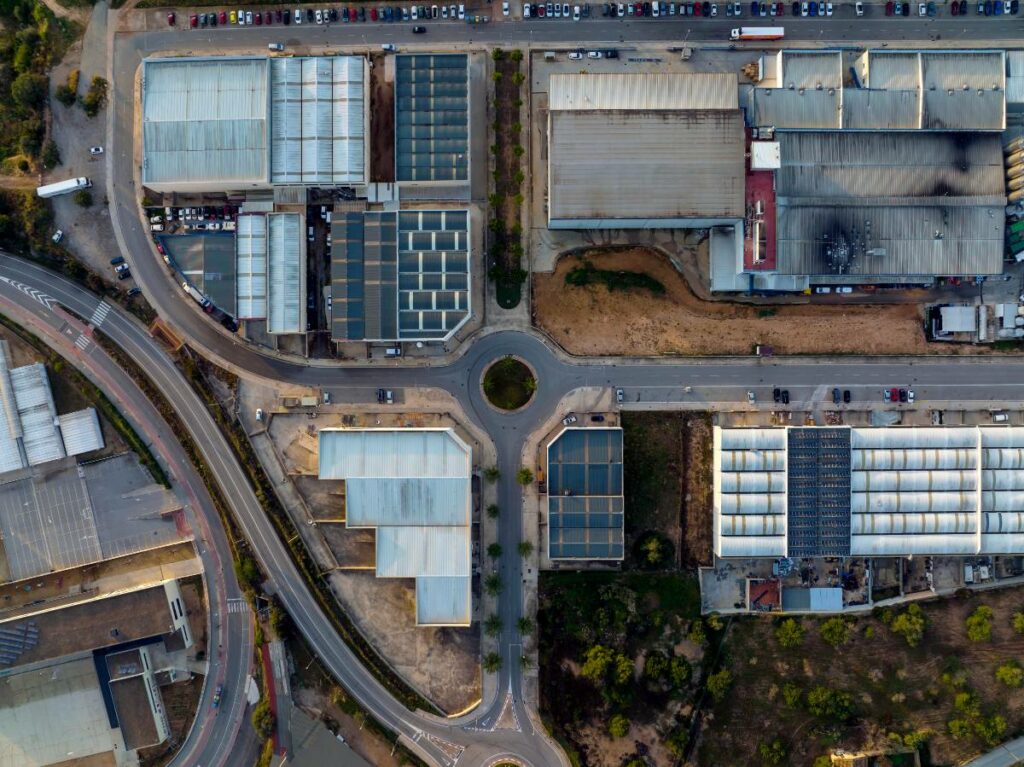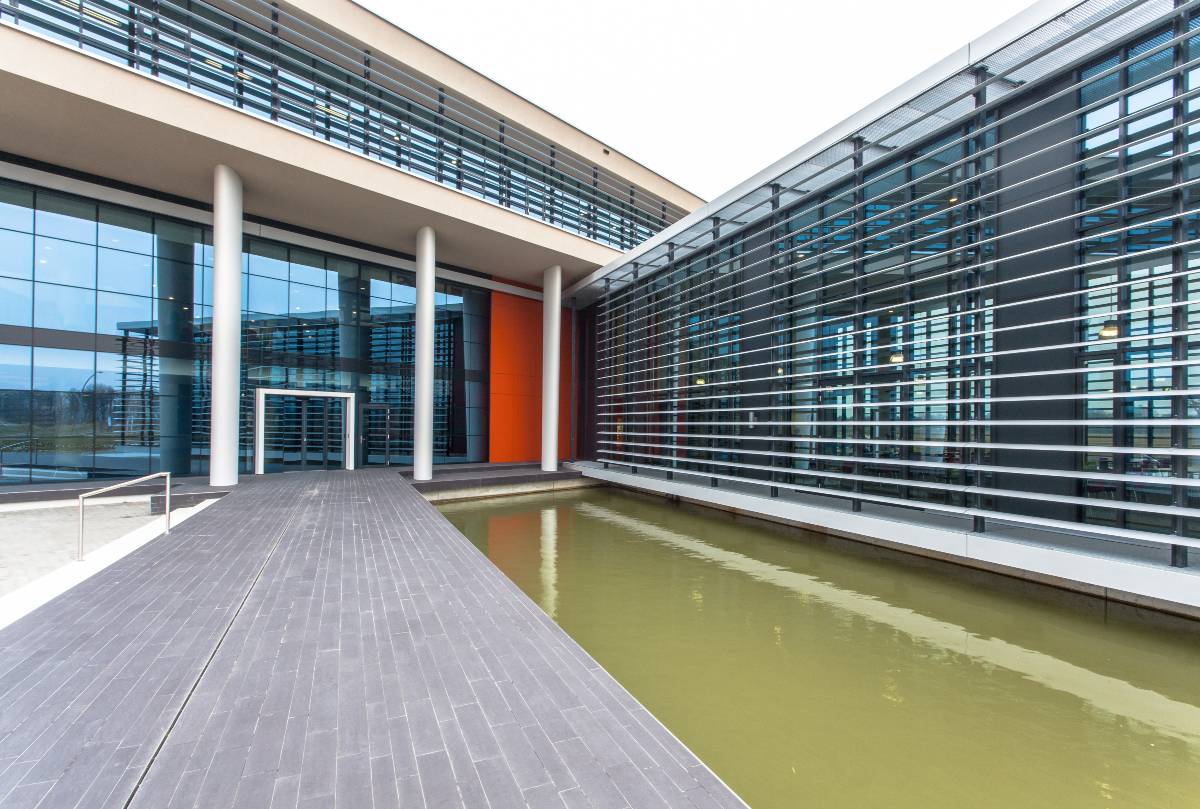As a seasoned commercial real estate professional with over 18 years of experience representing business owners and landlords, I’ve facilitated countless property transactions through an efficient and dedicated approach.
My passion lies in helping clients fulfill their real estate ambitions, whether they’re looking to lease or purchase commercial space.
Throughout my career, I’ve gathered invaluable insights on attracting and retaining optimal tenants for industrial properties. With vacancy rates rising in many markets, it’s essential to implement an effective tenant-sourcing strategy to keep your asset generating revenue.
This comprehensive guide provides my best tips for finding—and keeping—the ideal industrial occupants for your property.
Key Takeaways
- Define your ideal tenant profile and space requirements to attract matches
- Analyze market conditions to set competitive lease rates and terms
- Use online listings and targeted ads to market vacancies
Industrial Tenants For Your Commercial Real Estate
Industrial assets like warehouses and manufacturing plants have unique leasing considerations given their large footprints and intensive utility usage. It’s paramount for property owners to find tenants who suit the space and have the financial means to fulfill lease obligations.
As your broker, I take a tailored approach to matching industrial tenants with landlord partners. This ensures mutually beneficial partnerships for the long haul.
Here’s an overview of my proven tenant sourcing blueprint:
- Define tenant requirements
- Research market conditions
- Market property online & locally
- Screen tenant prospects thoroughly
- Structure negotiable lease terms
- Plan moving timelines proactively
Now, let’s explore each step to leasing your industrial asset successfully:
Define Your Goals and Requirements
Before seeking tenants, outline the attributes of your ideal occupant below based on property capabilities:
Ideal tenant profile: Target stable companies in growth mode needing 10-20k SF.
Space specifications: Dimensions, ceiling height, truck bays, zoning, and special features.
Lease terms and rents: Length (3-5 years), triple net (+ utilities/taxes), deposits, etc.
Growth plans: Expansion capabilities or need to relocate eventually.
This crystalizes the mutual fit for tenants searching available listings, allowing you to prioritize compatible prospects from inbound inquiries.
Analyze Local Market Conditions
It’s critical to research industrial supply and demand dynamics in your area before setting terms. Compare recent activity to inform pricing:
- Review leased comps with broker colleagues
- Drive the submarket to gauge visible vacancies
- Check permitting for ground-up construction
- See if authorities offer move-in incentives
Monitoring the indicators above gives perspective on establishing reasonable current rents and lease lengths that attract tenant interest quickly.
Where to Find Prospective Industrial Tenants
With a firm grasp of economic conditions, now cast your net extensively to source potential occupant leads:
- Commercial real estate platforms like Loopnet allow buyers and tenants to search available listings conveniently. Create a robust property page highlighting unique amenities to stand out.
- Local business associations and networks provide tenant prospects already invested locally. Attend trade events to connect.
- Introduce yourself to businesses near your vacancy doing drive-bys. Some may have impending growth or relocation plans.
- Your broker network can circulate property details to colleague databases. Signed referral fees close deals!
- Consider digital advertising campaigns on social media and industry forums to gain visibility. Target decision-makers of space users matching your criteria.

Market Your Property for Maximum Exposure
To generate interest for your specific asset, ensure marketing checkboxes are covered:
- Highlight features and functionality like ceiling clearances, truck access, and conference capabilities that attract tenants from particular sectors.
- Craft accurate, enticing listings on commercial property platforms. Include vibrant photos, 3D virtual tours, and videos to engage prospects.
- Run paid targeted digital ads focused on desired tenant size and type to cut through noise.
- Install visible professional signage with “space available” contact details for drive-bys.
Thoroughly Evaluate and Select Tenant Prospects
As leads come in, qualitatively assess each before expending time:
- Request financials to confirm the ability to pay rent. Seek profitable and cash flow-positive operations.
- Review business plans and operations to judge compatibility, growth trajectory, and synergy with your property’s offerings.
- Carefully verify references and existing lease track records to limit risk.
- Meet decision-makers in person to gauge responsiveness and seriousness.
Additionally, use my proprietary tenant compatibility assessment to score leads across 20 categories, revealing the best fit for your property.
Structure Optimal Negotiable Lease Terms
To allow flexibility in addressing unknowns ahead for both parties, build in malleable components:
- Make initial 3-year term prevalent for industrial space with extension options.
- Institute yearly rent bumps at ~3% to capture market growth rather than large hikes upon renewal.
- Keep utility costs separate rather than gross rent for transparency.
- Add an “out” if the business is sold or particular use restrictions apply in the future.
- Include expansion and early termination clauses.
Proactively Plan Post-Lease Logistics
Get the relationship off on the right foot by easing the transition:
- Guide personalized build-outs.
- Review moving timelines and equipment needs for a large inventory.
- Share contacts for local operations support: internet providers, waste management, etc.
- Reconfirm points of contact for maintenance communications or issues.
Stay engaged facilitating a smooth onset for the tenancy to foster retention and partnership.
Market Drivers
Based on TEU counts coming out of the Ports of Los Angeles and Long Beach, import numbers are showing signs of improvement. Without much of a Peak Season, we now wait and see how the Chinese New Year shapes up as the next key milestone.
Leasing Market
Negative net absorption continues to rule the market. According to a recent report, the Los Angeles industrial market saw a negative net absorption of 5.1 million square feet in Q4 2023, indicating continued challenges with finding tenants. The renewal market remains relatively strong as Companies elect to stay put and avoid the disruption and costs of moving.
We are seeing a decrease in asking rental rates for direct availabilities and an increase in concessions, particularly in free rent for any new transaction. Most of the activity in new transactions is in smaller, 50,000 and under offerings. Activity in the 75,000 and upsize range is few and far between. Vacancy rose to 5.2%, the highest level since 2018, and asking rents declined by 1.3% over the quarter but are still up 2.4% year-over-year.
How to Find Tenants for Industrial Properties
Understanding the Needs of Industrial Tenants
Industrial tenants have unique needs like ceiling clearance, loading docks, freight access, specialized power sources, and flexible facility configurations. It’s key to understand these needs when finding optimal tenants.
Key Factors to Consider When Finding Industrial Tenants
Critical factors include the nature of operations, utility usage, transportation logistics, growth plans, financial stability, move-in timelines, and property manager relationships.
Importance of Tenant Retention in Industrial Properties
Retaining reliable, consistent tenants through lease renewals and property upgrades is paramount for maximizing returns on industrial assets long-term.

Working with a Commercial Real Estate Advisor to Find Industrial Tenants
Seasoned advisors like myself leverage extensive networks, marketing avenues, listing platforms, and screening tools to source compatible, low-risk industrial tenants for your asset.
Effective Ways to Market Industrial Spaces to Prospective Tenants
Effective marketing showcases specialized building features via professional photography/videography, 3D interactive tours, eye-catching signage, and online/print listings targeting compatible businesses.
Ways to Find Tenants for Your Industrial Property
Collaborating with Commercial Real Estate Brokers
Well-connected brokers have valuable relationships with both landlords and tenants, facilitating matches through their deal flow, resources, and experience.
Utilizing High-Quality Signage to Attract Potential Industrial Tenants
Prominent signage should advertise available spaces, highlight special capabilities like ceiling heights, and include listing agent contacts for fast response.
Listing Your Industrial Property Online to Reach Prospective Tenants
Online listings on commercial real estate platforms expand the visibility of your asset to compatible prospects searching for space per customized criteria.
Understanding Lease Terms and Conditions for Industrial Tenants
Common considerations around length, extension options, maintenance, utilities, taxes, occupancy limits, and use restrictions should align with industrial operations and business plans.
How to Enhance Amenities and Features for Industrial Tenants
Expanding truck bays, modernizing power/HVAC systems, adding offices/conference rooms, flexible floorplans, and outdoor storage appeal to prospects.
Hiring a Commercial Real Estate Advisor to Secure Industrial Tenants
Benefits of Working with a Commercial Real Estate Advisor
Experienced advisors provide specialized insight on market conditions, verified lead sources, lease considerations, and move processes to reduce vacancies.
How a Commercial Real Estate Advisor Can Help You Find Quality Industrial Tenants
Advisors source tenants through industry connections and resources landlords lack, assessing compatibility based on location, operations, growth plans, and risk factors.
Identifying the Right Commercial Real Estate Advisor for Industrial Tenant Acquisition
Ideal advisors have strong networks and experience specifically in the industrial sector in your geographic area along with marketing/screening tools to find viable tenants.
Ensuring Tenant-Owner Compatibility in Industrial Property Leases
Advisors align landlord expansion capabilities and restrictions with tenants’ current and future business needs through customized build-outs and flexible lease terms.
How a Commercial Real Estate Advisor Assists in Tenant Retention for Industrial Properties
Proactive advisors facilitate ongoing communications between owners and tenants, suggesting property upgrades and win-win renewal tweaks to foster long-term partnerships.
Effective Marketing Strategies to Find Industrial Tenants for Your Property
Utilizing Digital Marketing Tactics to Attract Industrial Tenants
Paid search, social media, display ads, email campaigns, and website listings target decision-makers from compatible industries when searching online for space.
Establishing a Strong Online Presence for Your Industrial Property
Robust listings on commercial real estate platforms with engaging photos/videos, building specs, area/neighborhood data, and listing contacts build credibility and generate leads.
Engaging with Potential Industrial Tenants through Social Media Platforms
Having a professional Facebook page and LinkedIn profile allows prospective tenants to explore the asset, track updates, and inquire about vacancies.
Enhancing Visibility through Industrial Property Showcases and Open Houses
Hosting open houses and tours Led by advisors informs prospects on specialized layouts and features difficult to convey through listings alone when evaluating fit.
Collaborating with Industry-Specific Organizations to Attract Industrial Tenants
Partnerships, sponsorships, and networking with trade organizations broaden connections with companies likely needing space as they grow.
Understanding Lease Considerations and Tenant Relations in Industrial Property
Essential Lease Clauses and Terms for Industrial Property Tenants
Common lease considerations like base rent/NNN splits, utility payouts, use allowances, overhaul restrictions, renewal/termination options, and maintenance liabilities enable mutually beneficial partnerships between owners and tenants by setting clear expectations around cost and operating procedures.
Ensuring Tenant Satisfaction and Long-Term Retention in Industrial Properties
Proactive check-ins, willingness to modify build-outs, responsiveness in addressing issues, parking/access upgrades and rent incentives boost satisfaction, likelihood of lease renewal, and referrals for your asset.
Managing Industrial Property Vacancies and Tenant Turnover Effectively
Leveraging advisors to tap industry networks minimizes vacancies through continuous lead generation, while competitive lease rates and responsive management retain existing tenants long-term limiting turnover.
Effective Communication Strategies for Industrial Property Owners and Tenants
Consistent contacts post-lease for maintenance requests, contingency planning for business fluctuations, and relationship-building gatherings foster collaborative, long-lasting tenant partnerships.
Implementing Tenant-Focused Solutions to Enhance Industrial Property Tenure
Savvy owners make farsighted investments like expanded freight access, sustainable construction for cost savings, specialized power sources, and modular layouts supporting changing business requirements which boost tenant retention.
FAQs
What are the most important factors when evaluating potential industrial tenants?
The critical considerations are financial health, business plan viability, use case compatibility, strong references, and responsiveness. My tenant fit assessment incorporates these.
What’s the best way to make my property stand apart from prospective tenants?
Create engaging listing content highlighting specialized functionality and site strengths suited for certain tenants through metrics, photos, videos, and 3D tours.
What resources do you leverage to source qualified tenant prospects for vacancies?
My extensive broker network, proprietary database, online listings, paid ads, networking events, and market introductions provide tenant candidate pipelines.
What lease structure allows optimal flexibility for unknown future business needs?
Include malleable components like early termination clauses, subleasing allowances, and staged options to expand space mid-lease if necessary.
What practical tips help craft “win-win” lease terms with new tenants?
Transparent separate expense breakdowns, gradual rent bumps, customizable build-outs, moving help, contact accessibility, and willingness to negotiate terms.
How can I find the best commercial tenants for my property investment?
To find the best commercial tenants for your property investment, you should focus on listing your property with reputable brokers, conducting targeted marketing, and offering attractive terms to attract high-quality tenants.
What should I do if I’m unable to find tenants for my commercial property?
If you’re unable to find tenants for your commercial property, consider reassessing your property marketing strategy, seeking professional advice from a commercial real estate brokerage, and evaluating any factors that may be deterring potential tenants.
Conclusion
I hope this all-encompassing perspective on attracting and onboarding optimal industrial tenants proves helpful in leveraging my nearly 20 years of experience.
As your broker, I take pride in representing client interests while forging win-win partnerships between landlords and occupants.
If you have any other questions on the industrial leasing process or want to discuss an available property, please schedule a consultation with me online. I look forward to helping you meet your real estate ambitions.




